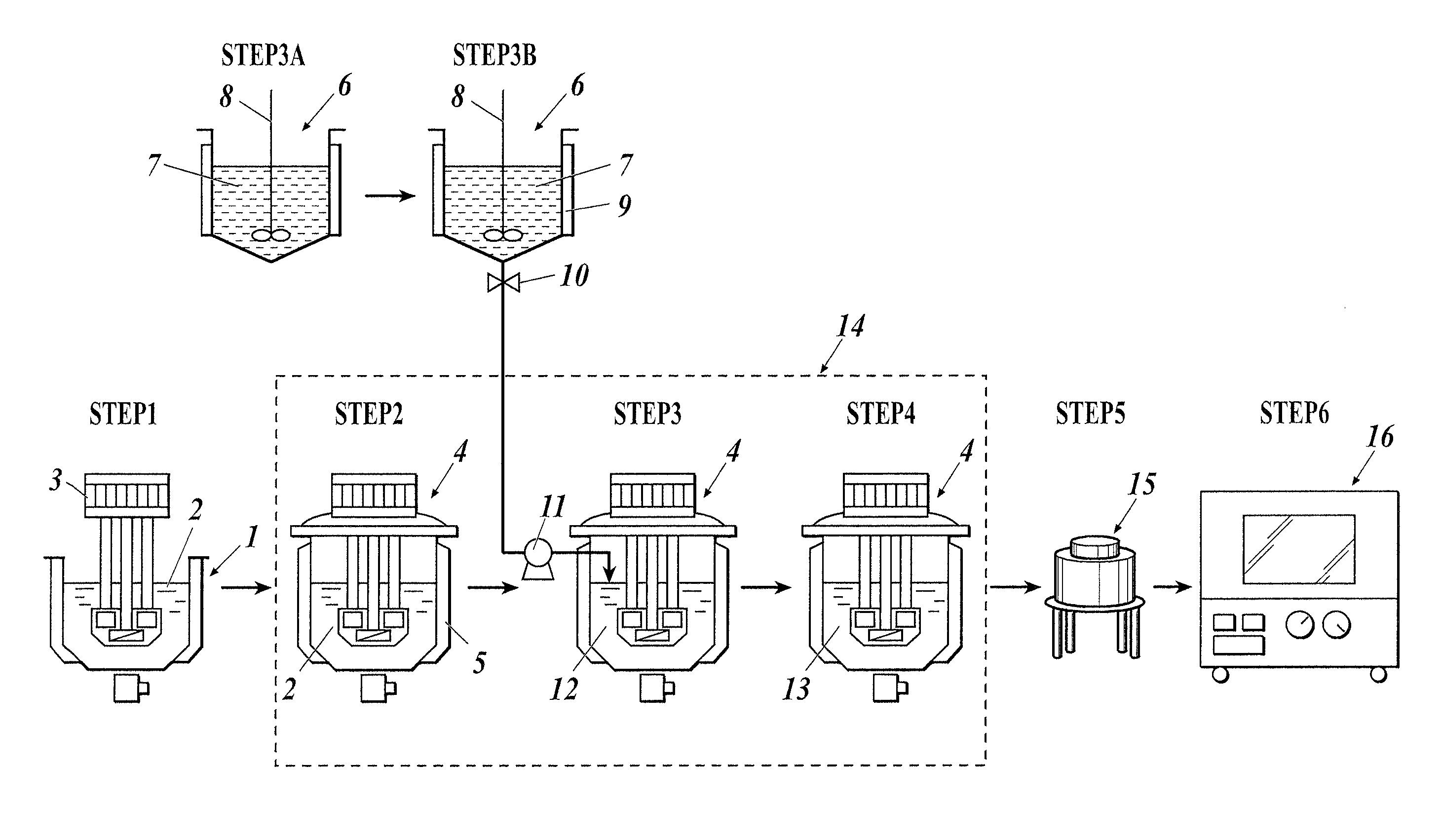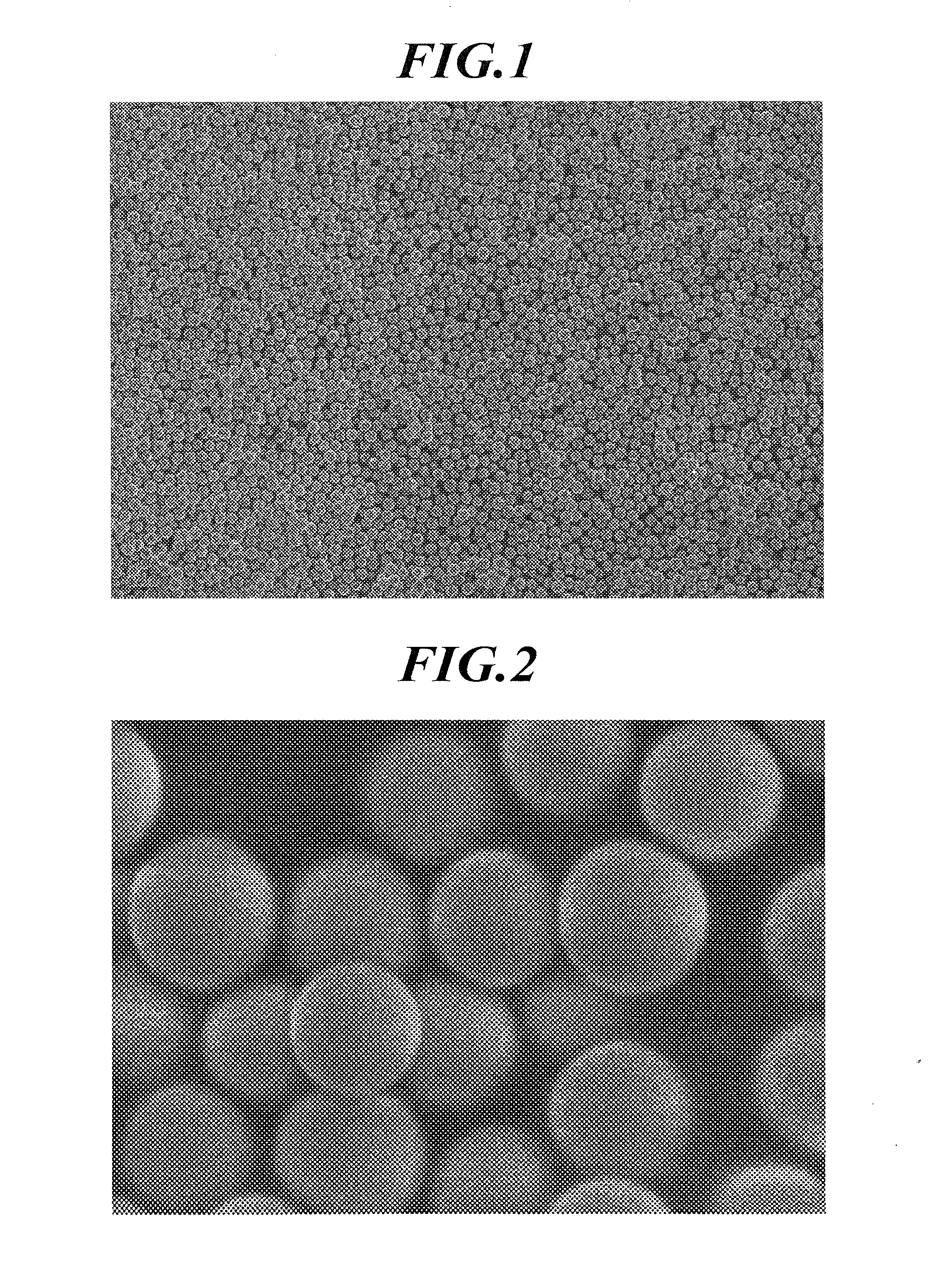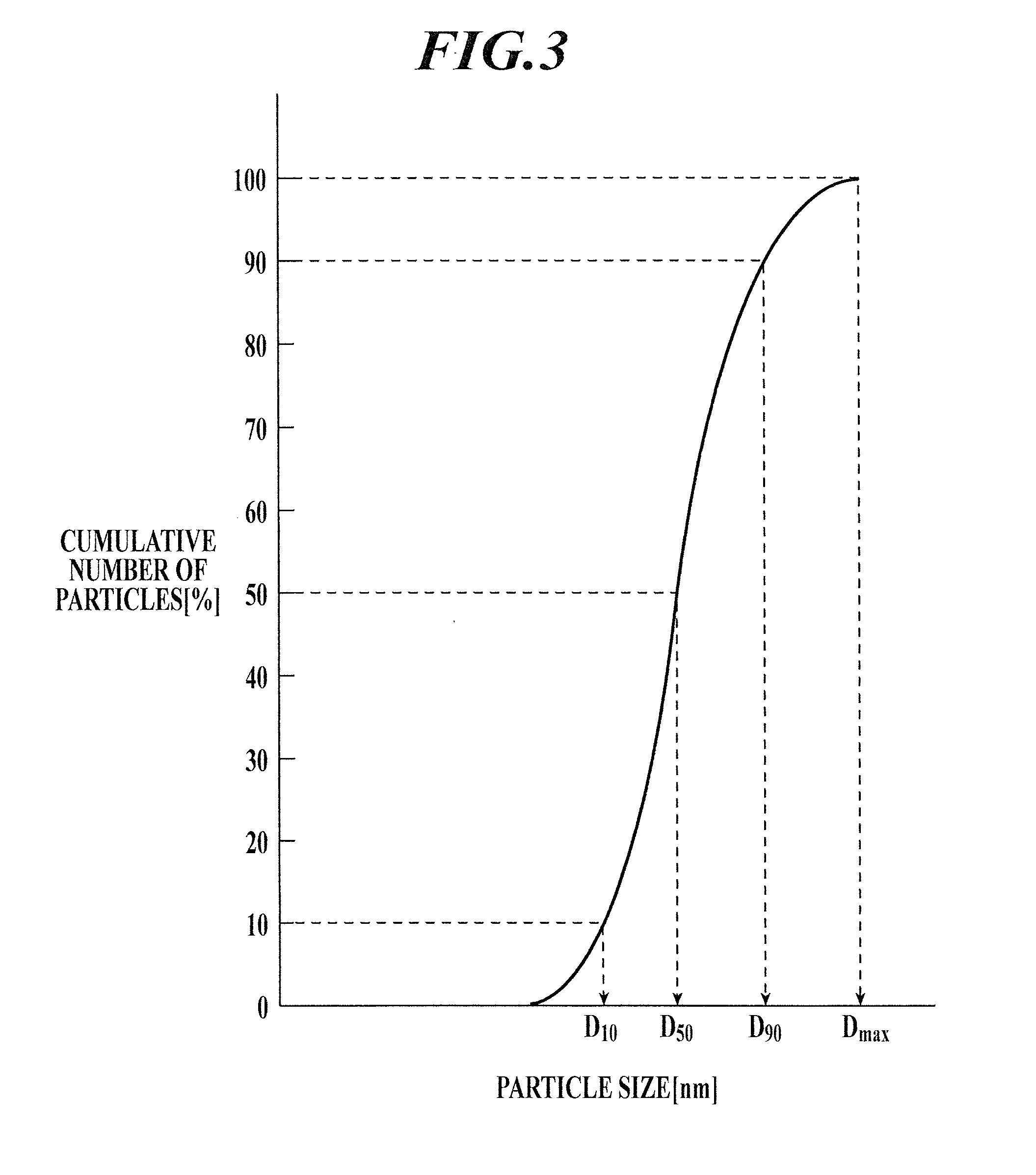Polishing Material Particles, Method For Producing Polishing Material, And Polishing Processing Method
a technology of polishing material and particle, which is applied in the direction of lanthanide oxide/hydroxide, manufacturing tools, other chemical processes, etc., can solve the problems of high polishing rate, easy scratching of particles on polished surfaces, and abrasives containing cerium oxides, etc., and achieve high monodispersity, high polishing rate, and high polishing rate
- Summary
- Abstract
- Description
- Claims
- Application Information
AI Technical Summary
Benefits of technology
Problems solved by technology
Method used
Image
Examples
example 1
Preparation of Abrasive Material
[0312]Abrasive materials 1 to 14 were prepared in accordance with method A.
[0313][Preparation of Abrasive Material 1]
[0314]Abrasive material 1 was prepared through the following steps.
[0315](Step A)
[0316]In this step, 0.5 L of a 5.0 mol / L aqueous urea solution was placed into a closed vessel and heated from 25° C. to 100° C., and then kept at 100° C. for six hours. Subsequently, the aqueous urea solution 1 was cooled to 25° C. (i.e., Step A of FIG. 4).
[0317](Step B)
[0318]Pure water, 162 ml of a 1.0 mol / L aqueous cerium nitrate solution (81.0 mol %), and 38 ml of a 1.0 mol / L aqueous yttrium nitrate solution (19.0 mol %) were mixed with each other to prepare 9.5 L of an aqueous rare-earth salt solution 1. The prepared aqueous rare-earth salt solution 1 was then heated to 90° C. (i.e., Step B of FIG. 4).
[0319](Step C)
[0320]The aqueous urea solution 1 prepared in Step A and kept at 25° C. was fed to the aqueous rare-earth salt solution 1 heated to 90° C. ...
example 2
Preparation of Abrasive Material
[Preparation of Abrasive Materials 15 to 20]
[0386]Abrasive materials 15 to 20 were prepared as in abrasive material 1 of Example 1, except that the concentrations of the aqueous rare-earth salt solution 1, the heating times and the heating temperatures of the aqueous urea solution 1 were changed to give the ratios Dmax / D50, D10 / D50, and D90 / D50 shown in Table 2.
[0387]To increase the ratios Dmax / D50 and D90 / D50, the concentration of the aqueous rare-earth salt solution 1 prepared in Step B was increased. To increase the ratio D10 / D50, the heating temperature of the aqueous urea solution 1 was decreased in Step A to decrease the concentrations of the compounds generated by the decomposition of urea.
[0388]>
[0389]The prepared abrasive materials 15 to 20 and the abrasive material 1 of Example 1 were evaluated for the following aspects.
[0390][Particle Size Distribution Parameter: Measurement of Particle Sizes D10, D50, D90, and Dmax]
[0391]As in the measurem...
example 3
Preparation of Abrasive Material
[Preparation of Abrasive Material 101]
[0396]Abrasive material 101 was prepared in accordance with the following steps. The numbers in parentheses described with the following components correspond to the numbers in FIG. 5.
[0397](1) In the flow process chart of FIG. 5, 0.5 L of a 5.0 mol / L aqueous urea solution 101 was prepared as the aqueous precipitant solution (7), and then fed to the vessel (6) for preparing the aqueous precipitant solution and heated to 60° C. (see Steps 3A and 3B of FIG. 5).
[0398](2) As in Step 2 of FIG. 5, pure water was added to 200 ml of a 1.0 mol / L aqueous cerium nitrate solution to prepare 9.5 L of an aqueous rare-earth salt solution 101 (2), and then the aqueous rare-earth salt solution 101 was placed into an autoclave as the pressure vessel (4) and heated to 115° C. (see Step 2 of FIG. 5).
[0399](3) As in Step 3 of FIG. 5, a 5.0 mol / L aqueous urea solution 101, i.e., the aqueous precipitant solution (7) kept at 60° C. as in...
PUM
| Property | Measurement | Unit |
|---|---|---|
| average aspect ratio | aaaaa | aaaaa |
| particle size D50 | aaaaa | aaaaa |
| cumulative particle size distribution | aaaaa | aaaaa |
Abstract
Description
Claims
Application Information
 Login to View More
Login to View More - R&D
- Intellectual Property
- Life Sciences
- Materials
- Tech Scout
- Unparalleled Data Quality
- Higher Quality Content
- 60% Fewer Hallucinations
Browse by: Latest US Patents, China's latest patents, Technical Efficacy Thesaurus, Application Domain, Technology Topic, Popular Technical Reports.
© 2025 PatSnap. All rights reserved.Legal|Privacy policy|Modern Slavery Act Transparency Statement|Sitemap|About US| Contact US: help@patsnap.com



